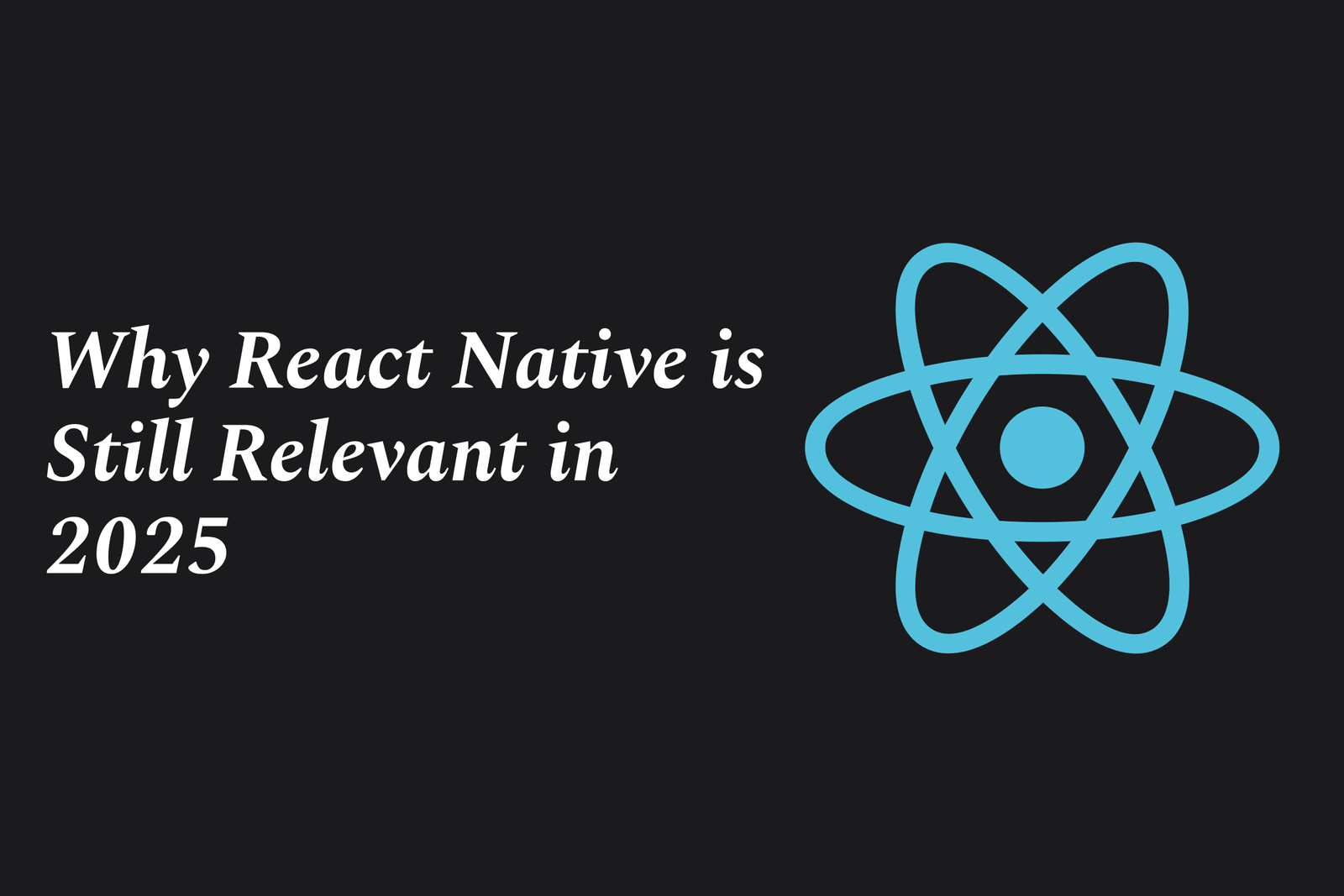Why react native is still relevant in 2025
React Native remains relevant in 2025 as a powerful, efficient cross-platform framework that enables developers to build seamless mobile apps for iOS and Android using JavaScript. Its strong community, continuous improvements, and enterprise adoption keep it a top choice for modern app development.
Why React Native is Still Relevant in 2025
1 ) React Native’s Continued Popularity and Adoption
React Native remains a widely used framework for cross platform mobile app development in 2025. Major companies such as Meta, Microsoft, Shopify, Tesla, and Discord rely on it, highlighting its relevance and robustness for building production grade applications across iOS, Android, web, and desktop platforms.
2 ) Strong Ecosystem and Community Support
With over 120,000 stars on GitHub and thousands of contributors, React Native benefits from a vast ecosystem of libraries, plugins, and tools (e.g., Expo, React Navigation, Reanimated). This strong community backing ensures continuous improvements, support, and innovation.
3 ) New Architecture Enhancements
React Native's evolution includes major architectural upgrades such as Fabric (modern UI rendering and concurrency), TurboModules (efficient and lazy loadable native modules), and JavaScript Interface (JSI) enabling faster communication between JavaScript and native code. These enhancements significantly improve performance, flexibility, and native interoperability.
4 ) Performance Improvements and Stability
Despite early concerns, React Native now delivers high performance comparable to native apps when best practices are applied. Shopify, for example, reports sub 500ms screen load times and over 99.9% crash free sessions. This dispels myths about React Native’s inherent slowness and highlights its viability for fast, stable applications.
5 ) Developer Experience and Productivity Gains
React Native’s hot reloading feature dramatically speeds up development cycles by instantly reflecting code changes, eliminating lengthy recompilations typical in native development. This leads to improved developer flow and higher productivity.
6 ) Cross Platform Code Reuse and Talent Portability
The “write once, run anywhere” philosophy reduces duplicated effort for iOS, Android, and web platforms. This also allows developers to work fluidly across platforms, increasing team agility and enabling businesses to ship more value rather than managing platform parity.
7 ) Strategic Enterprise Endorsements
Shopify and other enterprises have successfully migrated their apps to React Native, using it as a cornerstone technology. They combine React Native with native modules where appropriate, adopting a pragmatic approach to get the best of both worlds.
8 ) Competitive Landscape and Language Considerations
While Flutter with Dart offers advantages such as strong typing and a unified rendering engine (e.g., Impeller), React Native’s JavaScript (and optional TypeScript) ecosystems provide unmatched familiarity and a vast developer base, making it a practical choice for many teams.
9 ) Ongoing Framework Maturation and Future Outlook
React Native continues to mature with expanded use cases beyond mobile, including desktop and web development. Improvements in tooling, integrations with modern tech stacks, and community driven innovation promise a strong and relevant future.
Summary: React Native remains highly relevant in 2025 due to its mature ecosystem, strong community, ongoing performance improvements, developer productivity advantages, and proven enterprise adoption. While emerging competitors offer compelling features, React Native's flexibility, extensive tooling, and enterprise backing ensure it continues to be a top choice for cross platform app development moving forward.
https://justacademy.in/news-detail/flutter-for-logistics-and-delivery-apps
https://justacademy.in/news-detail/android-voice-typing-enhancements
https://justacademy.in/news-detail/best-new-android-apps-released-this-month
https://justacademy.in/news-detail/android-apps-optimized-for-chrome-os
https://justacademy.in/news-detail/android-app-monetization-strategies-2025
Related Posts
Java supports GDPR and data privacy by enabling secure data handling through encryption, controlled access, and precise data management. It allows developers to minimize PII exposure, ensure data confidentiality, and design workflows that comply with data protection regulations effectively.
Java code quality tools have evolved to include advanced static analysis, integrated security checks, and AI-powered code reviews. These updates help developers detect bugs, enforce coding standards, and enhance security, streamlining the development process and improving overall code reliability.
Java remains a cornerstone in big tech companies, evolving with modern features like records, pattern matching, and virtual threads. Its robust ecosystem, enhanced performance, and growing AI integrations keep it vital for both legacy systems and innovative new projects.
Java and CI/CD pipeline optimizations streamline Java application development by automating builds, tests, and deployments. They improve efficiency through parallelization, caching, and secure secrets management, enabling faster feedback loops and more reliable, scalable software delivery.
Java supports modern cryptography standards through its flexible Java Cryptography Architecture (JCA), enabling integration of advanced algorithms like AES, EdDSA, and post-quantum tools. Libraries like Bouncy Castle offer FIPS-certified, hardware-accelerated implementations for secure development.
Java 23 enhances record patterns by enabling concise, direct destructuring of record components within pattern matching, simplifying type checks and data extraction. This improvement boosts code readability and expressiveness by reducing boilerplate in handling immutable data classes.
Java remains a top choice for mobile app backends, powering scalable, secure, and high-performance server-side solutions. Latest trends include cloud-native microservices, reactive programming, and enhanced JVM optimizations, enabling efficient, flexible, and robust mobile backend development.
Java SE 24 and LTS Java SE 21 offer enhanced features and performance, while Apache Spark 4.0.0 introduces Scala 2.13 support and advanced ML and SQL capabilities. Together, they empower developers to build scalable, high-performance data applications with modern tools.
JUnit 5 modernizes Java testing with a modular architecture, improved assertions, and seamless Java 8+ support. Beyond JUnit, tools like Mockito and AssertJ enhance mocking and assertions, creating a powerful, flexible ecosystem for writing clean, efficient Java unit tests.
Java plays a pivotal role in cloud automation tools by providing a robust, platform-independent language used to build scalable automation frameworks like Jenkins and Selenium, enabling efficient CI/CD pipelines, testing, and orchestration across diverse cloud environments.










